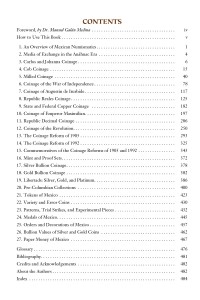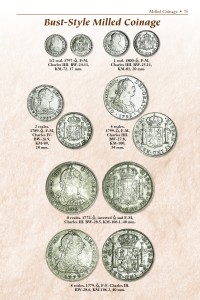Currency Changes Coming Soon
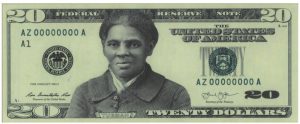 During a White House press briefing, the press secretary announced the “Treasury Department is taking steps to resume efforts to put Harriet Tubman on the front of the new $20 notes.”
During a White House press briefing, the press secretary announced the “Treasury Department is taking steps to resume efforts to put Harriet Tubman on the front of the new $20 notes.”
Creating the new $20 Federal Reserve Notes with a portrait of the abolitionist began in 2016 to have Tubman appear on the $20 note by 2020, the 100th Anniversary of the 19th Amendment. Although the Bureau of Engraving and Printing continued to work on the project, Treasury Secretary Steven Mnuchin eventually announced that a future administration would decide if having her portrait was appropriate. Mnuchin targeted 2030 as the earliest a new $20 note would appear.
Sources report that Mnuchin delayed the stoppage of the process as long as possible. He knew that the president did not support this change. After the announcement, sources report that the work continued without permission.
Although the source did not know the engraving status, it is speculated that the intaglio printing plates for the new $20 notes may be ready before the end of the year.
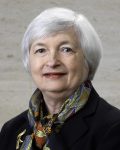 When the plates are ready, they will include the signature of Treasury Secretary Janet Yellen. The Senate approved Yellen’s appointment on an 84-15 vote. She will be the 78th Treasury Secretary and the first woman in that role in the department’s 232-year history.
When the plates are ready, they will include the signature of Treasury Secretary Janet Yellen. The Senate approved Yellen’s appointment on an 84-15 vote. She will be the 78th Treasury Secretary and the first woman in that role in the department’s 232-year history.
Previously, Yellen was the Chair of the Council of Economic Advisers under Clinton, President of the Federal Reserve of San Francisco, and served on the Federal Reserve Board of Governors before being appointed the Board’s chair 2014.
Mintage Limits Set for 2015 First Spouse Gold Coins
For Kennedy, in addition to being renown, the release of the 2014 50th Anniversary Kennedy Half-Dollar Gold Proof Coin may cause a sharp increase in demand from customers seeking to make special Kennedy gold sets using both the 2014 50th Anniversary Kennedy Half-Dollar Gold Proof Coin and the 2015 Jacqueline Kennedy First Spouse Gold Proof Coin. To account for this potential variable, we believe a maximum issuance of 30,000 coins would allow flexibility to increase production should customer demand exceed forecasted sales volumes for the other designs. These maximum mintage limits will be divided between coins with proof and uncirculated finishes based on consumer demand.
The Mint is not obligated to mint, and will not mint, to the maximum mintage limits unless it is supported by public demand. The production process and maximum mintages give us flexibility should there be a surge in demand over previous years.
Hi. I’m Scott and I’m a Collector
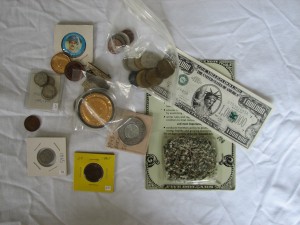 Collecting is a progressive addiction. It might start innocently with a friend introducing us to collecting and even giving us a few freebies. We dabble into buying more, especially items that tie us to our youth. We progress in collecting more from those childhood years putting together sets that we could not afford them. That feels pretty good, and soon we are tempted into expanding our collection into earlier and later years.
Collecting is a progressive addiction. It might start innocently with a friend introducing us to collecting and even giving us a few freebies. We dabble into buying more, especially items that tie us to our youth. We progress in collecting more from those childhood years putting together sets that we could not afford them. That feels pretty good, and soon we are tempted into expanding our collection into earlier and later years.
We get hooked on the high that comes from completing sets we only learned existed when we discover there are more cool items we never heard about before. We buy at flea markets, estate sales, from online classified advertisements, auctions, and dealers in cramped stores. Eventually, we are completely addicted and start bidding furiously on everything related to our collection including items in better condition than what we already have.
The collectors’ eyes start to glaze over as they move into progressive rounds of the addiction. Related collectibles appear on den and basement shelves. Second and third sets accumulate. Family members enable the addicts by covering up for them when they miss family events to visit yard sales or dealers instead. Soon the addicts are looking for obscure pieces and those one-of-a-kind items desired only by the select few who are as addicted.
It’s Classified!
Prior to the public disclosure of secret documents, administrations have declassified documents at various levels for many different reasons that those of us who worked in these areas did not understand what was to be classified at what levels and for how long. Each department and agency had its own rule. However, everything that was classified was supposed to be declassified after 50 years.
In 2009, President Obama issued Executive Order 13526 to try to create some order out of this chaos. Aside from defining the classification levels, document marking requirements, it also allowed agencies to apply to keep documents classified and for longer periods than previous reviews. The purpose was to protect national interests and security while preventing controversial declassification of documents.
Whenever trying to instill a new policy on the government, there will be many barriers to this change. While there are fewer areas of confusion, chaos remains. Of course the disclosures by Chelsea (neé Bradley) Manning and Edward Snowden did not help.
So what does this have to do with numismatics? Both the U.S. Mint and the Bureau of Engraving and Printing applied and were granted exemption from automatically declassifying documents.
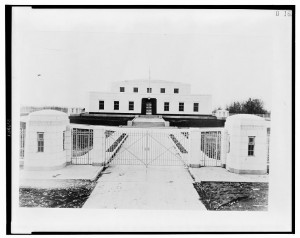
Treasury Department, Procurement Division, Public Buildings Branch, Fort Knox – United States Bullion Depository (1939)
What information could these agencies possibly have that would be classified?
According to Steven Aftergood, Director of the Federation of American Scientist Project on Government Secrecy, who interviewed John P. Fitzpatrick, director of the ISOO, the exemption for the U.S. Mint is for “security specifications from the U.S. Bullion Depository at Fort Knox, which was built in the late 1930s.”
In a comedic turn, Mr. Fitzpatrick told Aftergood, “Think ‘Goldfinger’.”
Then why does the Bureau of Engraving and Printing need an exemption from declassification for 25-years? A source familiar with the filing said that the exemption covers counterfeiting information. According to sources, there are anti-counterfeiting measures added to currency that have been planned for many years that have not been advertised. These are used by the United States Secret Service and other law enforcement organizations to detect counterfeiting. Many of the documents cover the planning for the changes that began in the 1990s.
 Sources also confirmed that there were other documents that the BEP and Treasury asked to be included in this exemption but not their general contents. Some hint was given that the classified information concerns long term and ongoing operations against international counterfeiters. Although not confirmed, it is suspected that the classified documents discusses enemy foreign governments actively working to counterfeit United States currency. No country was named but it has been rumored that North Korea has been attempting to counterfeit U.S. currency.
Sources also confirmed that there were other documents that the BEP and Treasury asked to be included in this exemption but not their general contents. Some hint was given that the classified information concerns long term and ongoing operations against international counterfeiters. Although not confirmed, it is suspected that the classified documents discusses enemy foreign governments actively working to counterfeit United States currency. No country was named but it has been rumored that North Korea has been attempting to counterfeit U.S. currency.
And you thought all the U.S. Mint and Bureau of Engraving and Printing did was manufacture money!
Summary of September coin-related legislation
With apologies for my absence, the end of the federal fiscal year has made me very busy. I have a few posts I am getting ready to queue up that I hope will be of interest. I appreciate your patience and hope to provide you with something interesting to read soon. In the mean time, here’s what congress did that is of interest to the numismatic community:
H.R. 2866: Boys Town Centennial Commemorative Coin Act
Competition is good
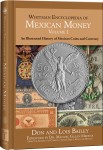 Most of the time I do not like repeating press releases or reporting on press releases. Press releases are written by or for the company issuing them. By design, they are written so that the announcement shows the company in a good light. I would rather use the product and report about it based on my own experience. But I am going to make an exception because of the long term implications.
Most of the time I do not like repeating press releases or reporting on press releases. Press releases are written by or for the company issuing them. By design, they are written so that the announcement shows the company in a good light. I would rather use the product and report about it based on my own experience. But I am going to make an exception because of the long term implications.
Whitman Publishing issued a press release to announce the release of the first volume of the Whitman Encyclopedia of Mexican Money, by Don and Lois Bailey. The first volume of a planned four-volume series starts the series with an overview and history of Mexican coinage and currency covers pre-Columbian money to the colonial era, the independence movement, revolutions, modern coinage reforms, commemorative programs, and silver, gold, and platinum bullion.
Created by: Chet Krause and Cliff Mishler Cataloging system of foreign coins, primarily used by the Krause Publications’ Standard Catalogs
Created by: Professional Coin Grading Service PCGS maintains its own cataloging system for United States coins
Created by: Albert Pick Pick was a German notaphilist who developed a cataloging system for currency
Created by: Leroy Van Allen and George Mallis Developed by the authors in 1965 to catalog die varieties of Morgan and Peace dollars
Created by: Richard S. Yeoman Original author of A Guidebook of United States Coins (The Red Book) developed a cataloging system primarily for Asian coins
Significant in the announcement is that this book introduces the cataloging of Mexican coinage with the Bailey-Whitman numbering system. The press release called this a comprehensive cataloging that is cross-referenced to “older systems.” Although I have not seen the actual book, page scans sent by Whitman as part of the press release shows that the older cataloging system being cross-referenced is the Krause-Mishler (KM) numbers used in Krause Publications’ Standard Catalog of World Coins.
Those of us who study and collect foreign coins have come to rely on KM numbers to help identify coins. The KM system has not only been unable to keep up with the proliferation of modern non-circulating legal tender coins (NCLT), especially from Canada, but is severely lacking when it comes to cataloging varieties.
Aside from omissions, the Standard Catalogs are riddled with errors that sometimes are never corrected. In the case of the Standard Catalog of World Paper Money, which is also known as the “Pick” catalog since it is organized by Albert Pick’s numbering scheme, it is so riddled with problems that Owen Linzmayer has produced his own catalog with better pictures and details called The Banknote Book. In fact, you can buy the book as a four-volume set or individual chapters representing different countries. I highly recommend Linzmayer’s books over all others. Go to banknotenews.com to learn more.
While I am not a collector of Mexican money, the sample pages provided by Whitman make the book look very compelling. It is difficult to review a book based on selected sample pages from the publisher, but it looks like something that could be used as a model for similar treatment of other countries. It would be nice to see similar books for Canadian, English, and Chinese coins.
If Whitman continues and provides comprehensive catalog information for other coins, it will be good for the industry. Between Whitman and Owen Linzmayer’s work, it should force Krause to fix their issues and provide better and more complete information to the collector. As we know, the more you know about your collection the better you enjoy collecting. This is why competition is good!


